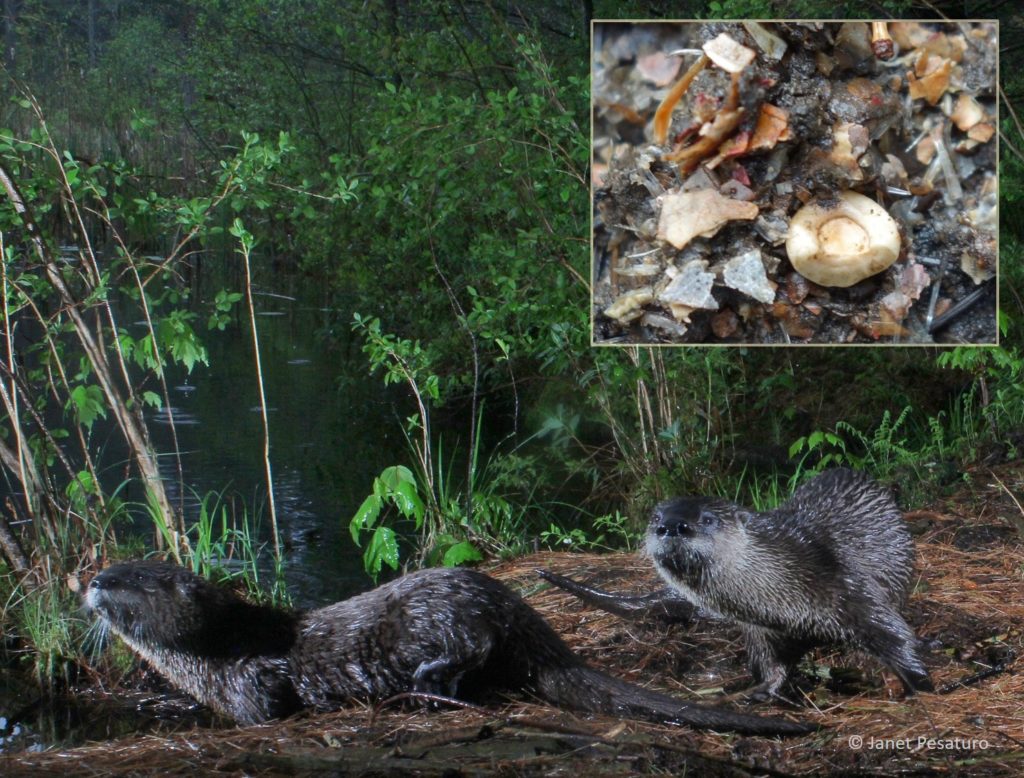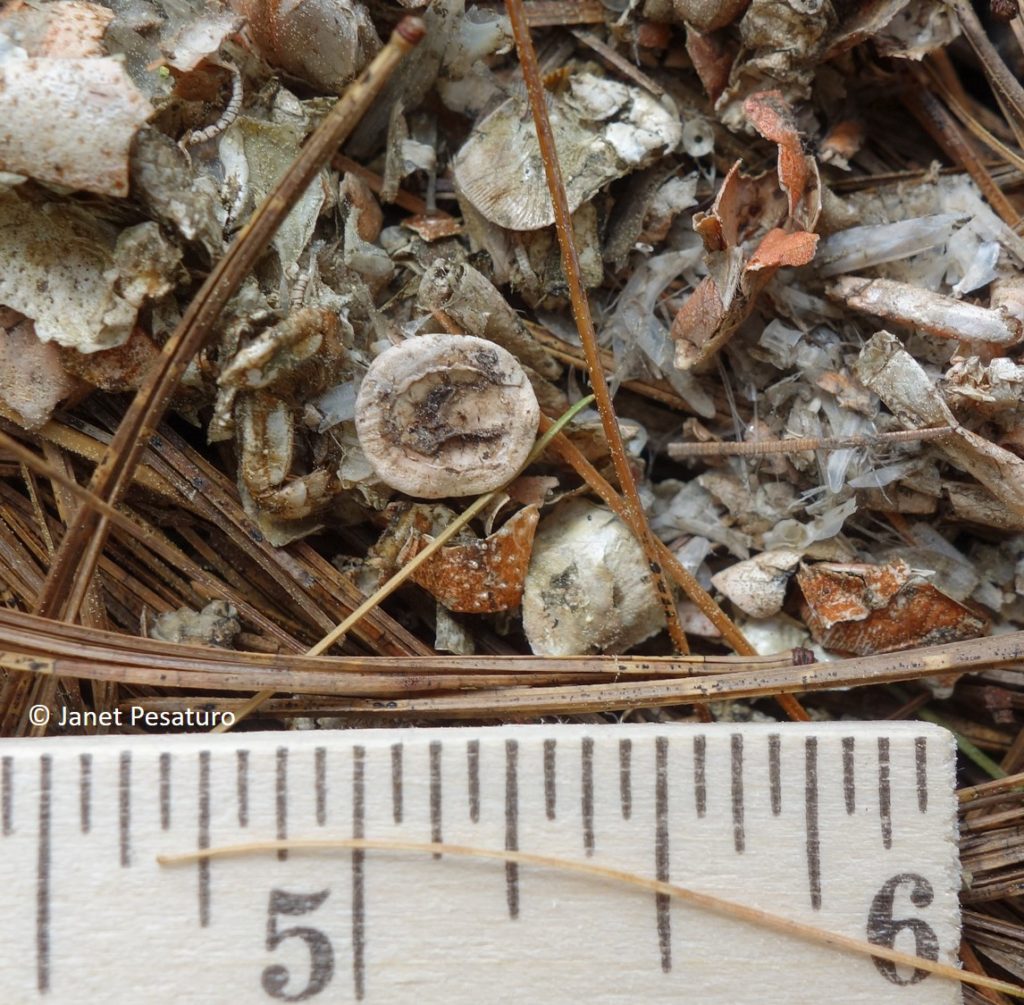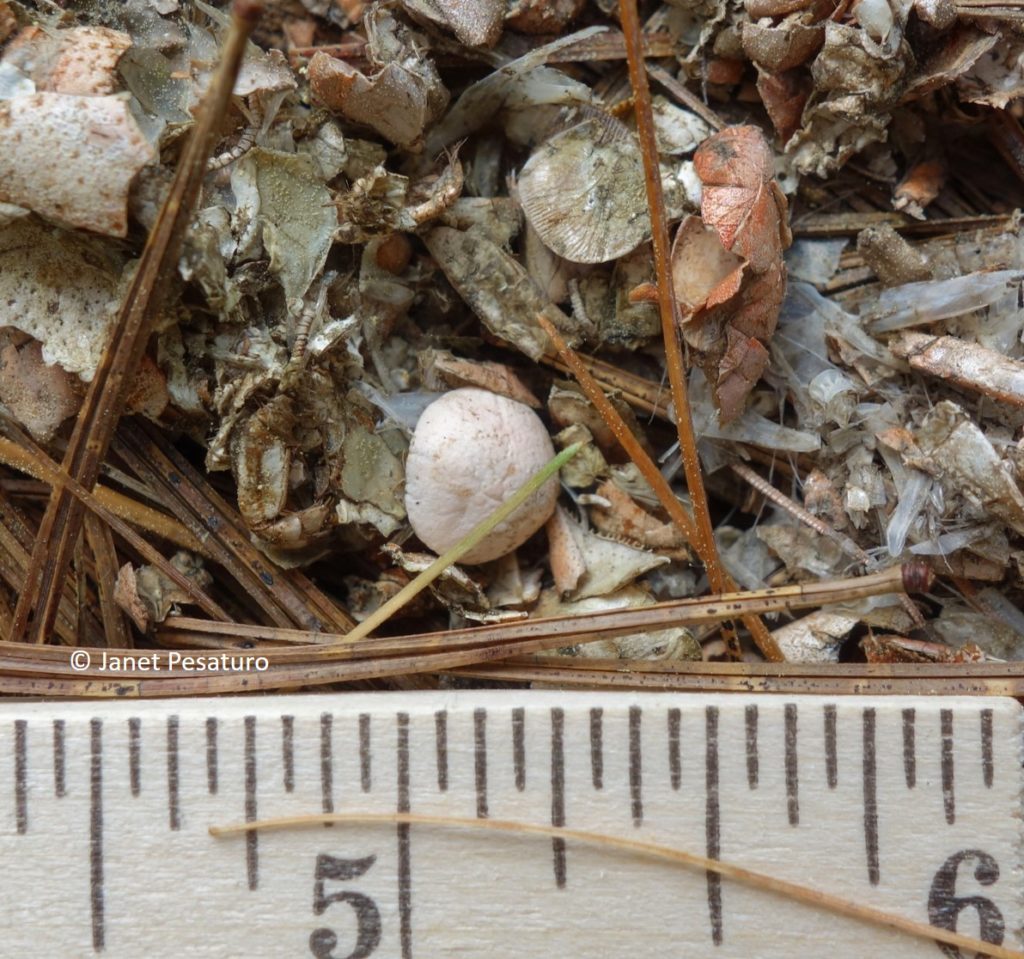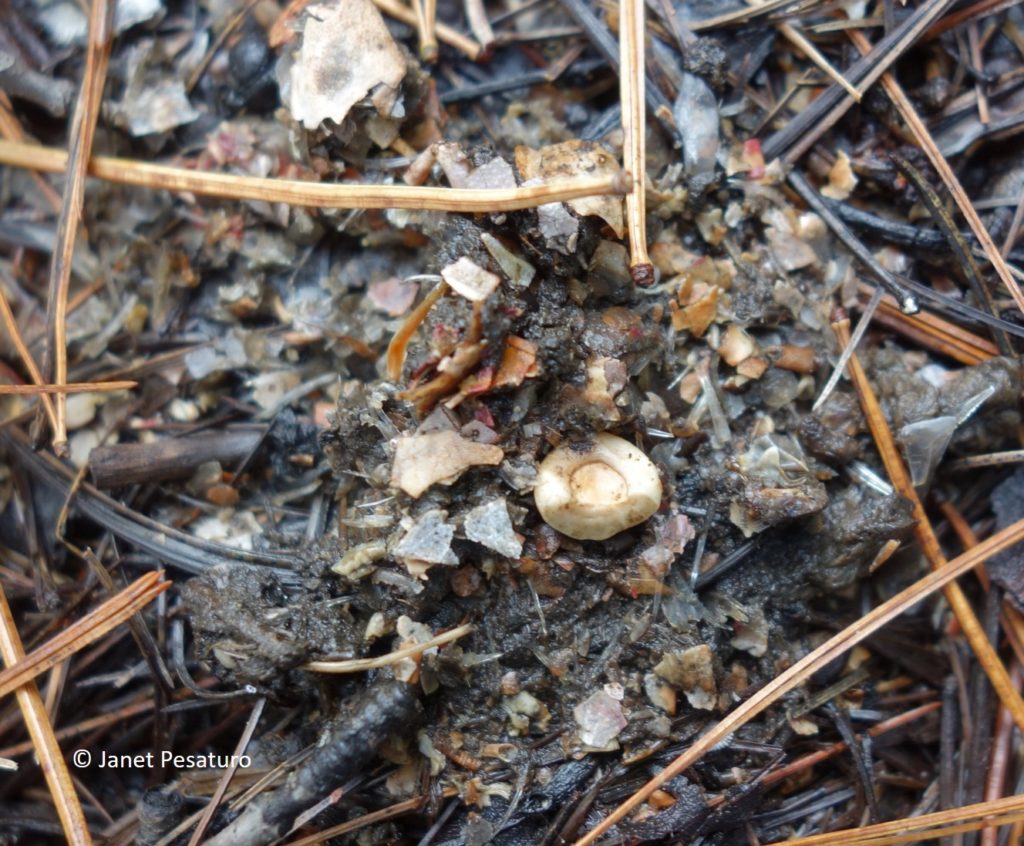Gastroliths in Otter Scat

Inset shows gastrolith in an otter scat filled with crayfish remains. Otters at a latrine photographed by homemade camera trap (Canon 60D and Nikon SB28 flashes)
When river otters feed on crayfish, the resultant scat contains pieces of the crayfish exoskeleton, usually reddish in color. If you carefully dissect the scat, you might find something else that came from the crayfish: a small white to pinkish stone shaped like a flattened bowl, called a gastrolith.

A pale pinkish, round object, a gastrolith, is in the center of this photo of otter scat containing crayfish parts. This is the concave side of the gastrolith.
In crayfish, gastroliths are composed primarily of calcium carbonate embedded in a matrix of chitin, a fibrous organic substance. Both calcium and chitin are two major components of the crayfish exoskeleton, and the gastroliths are essentially calcium stores needed for molting. Just before the old exoskeleton is shed, calcium is reabsorbed from it and deposited in the gastrolith. Then, as the new exoskeleton is formed, calcium is transported from the gastrolith to the new exoskeleton.

Convex side of a gastrolith found in an otter scat containing crayfish remains.
It is worth noting that the word gastrolith is a general term, derived from the Greek words gaster and lithos. It literally translates to “stomach stone” and may refer to any rock held within the gastrointestinal tract of an animal, not just stones used to store calcium for molting. Various birds, reptiles, and aquatic mammals swallow rocks that remain in the stomach to help grind food, and these are considered gastroliths. The size often varies with the size of the animal. For example, domestic chickens swallow tiny stones, or “grit”, and ostriches swallow stones up to 4 inches long. The crayfish gastroliths I’ve found in otter scat in the Northeast are about 1/4 inch in diameter, which seems disproportionately large compared to the sandy grit found in the stomach of the much larger chicken. But then again, the purpose of crayfish gastroliths is quite different.

Another gastrolith in an otter scat. This one is broken and shown at an angle so you can observe the flattened bowl shape.
Source and Further Reading
Shecter, A, A. Berman, A. Singer, A. Freiman, G. More, J. Erez, E. D. Afalo and A. Sagi. “Reciprocal Changes in Calcification of the Gastrolith and Cuticle During the Molt of Cycle of the Red Claw Crayfish Cherax quadricarinatus.” Biological Bulletin. 214 (2008): 122-134.
Interested in river otters? See River Otters Scent Marking.

Love it! Thanks for this Janet.
My pleasure, Pat!
Red Claw Crayfish! Say that three times fast! Cool article!
Thanks Kim! I’m glad I’m typing rather than talking, because my tongue is in a knot at the moment 😀
Very good and interesting post.
Thanks, Woody!
I love reading your stuff, especially about otters. You are the kind of person who I’d love to have coffee with and chat all about my otter obsessed and biology fascinated mind.
I guess I’d better write more otter posts, then, lol!
Pingback:River Otter Latrines: Finding and Identifying Them - Winterberry Wildlife